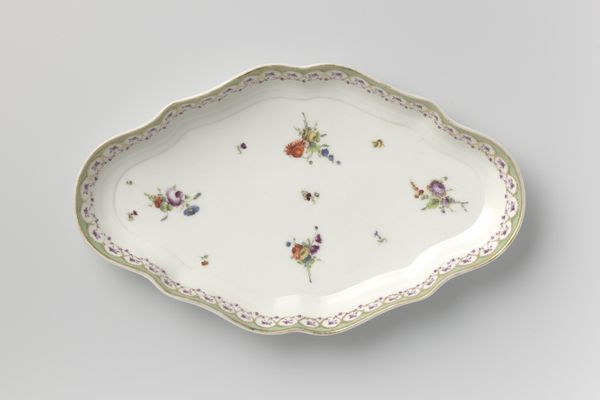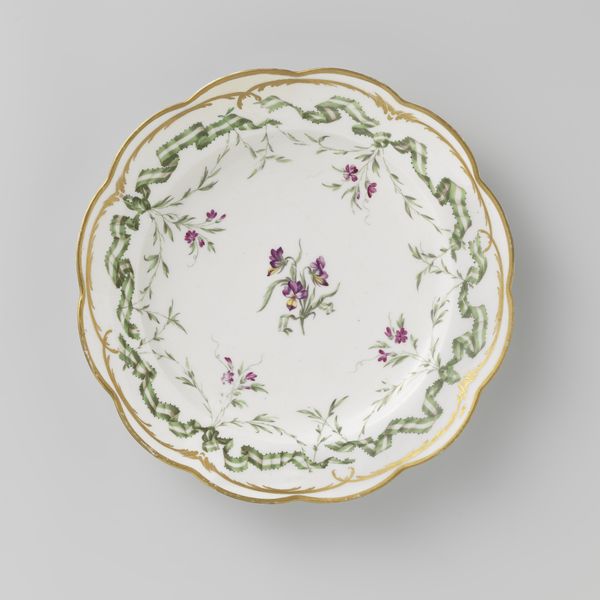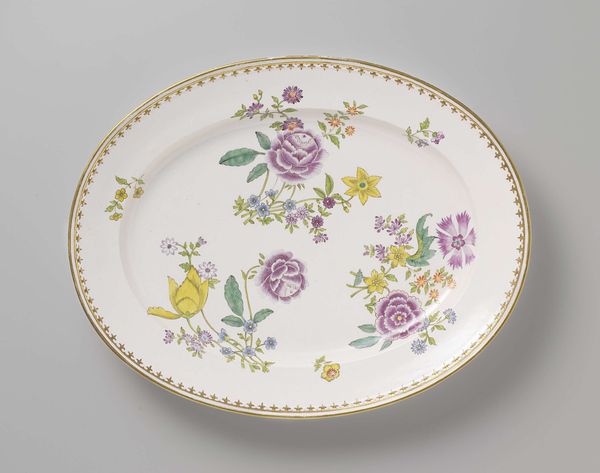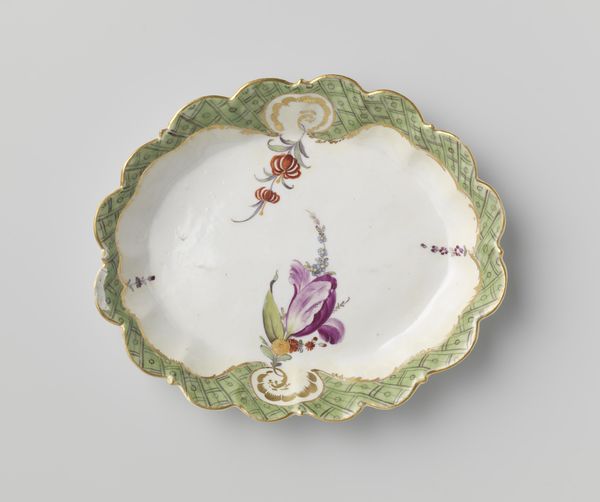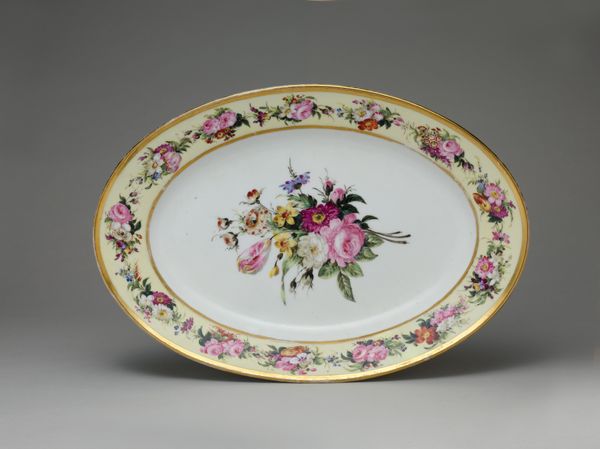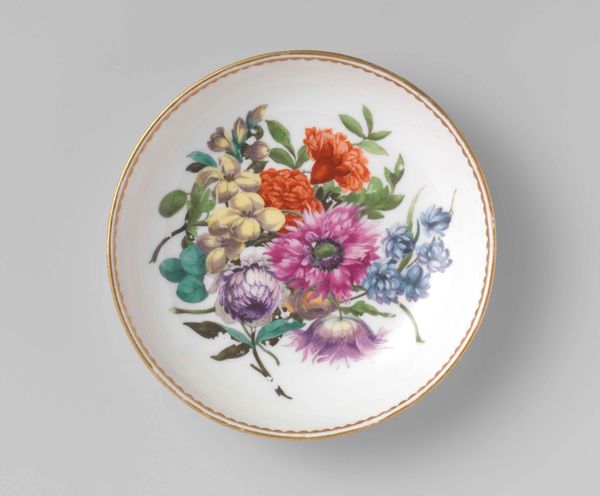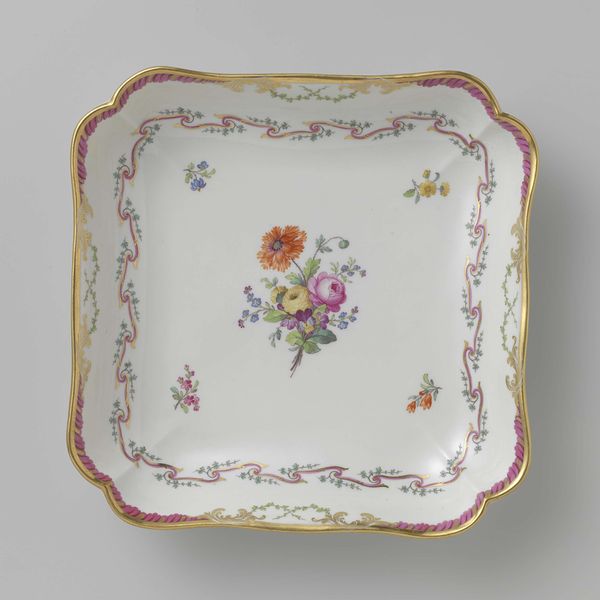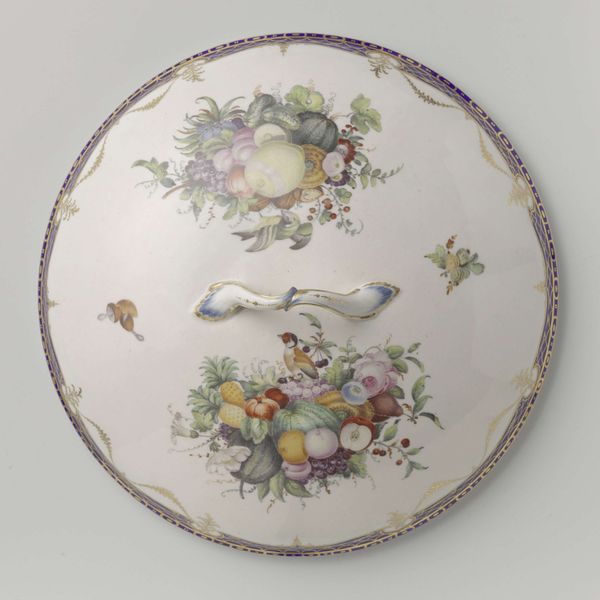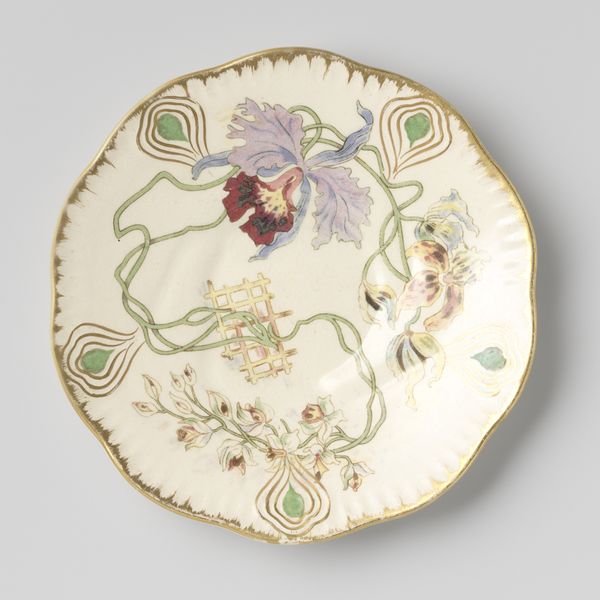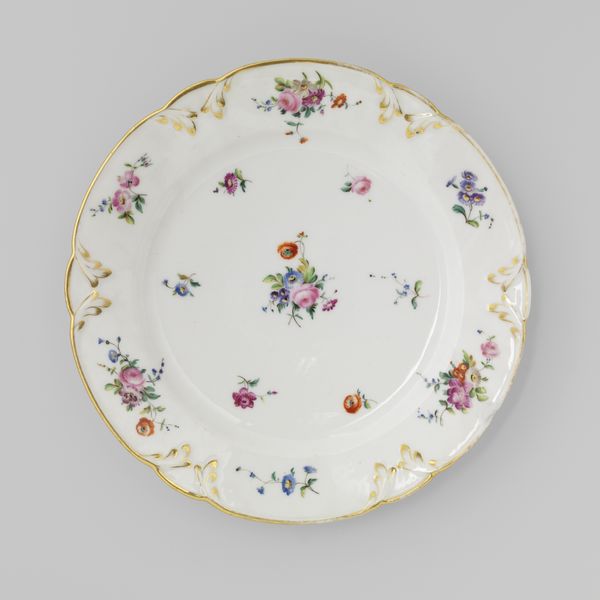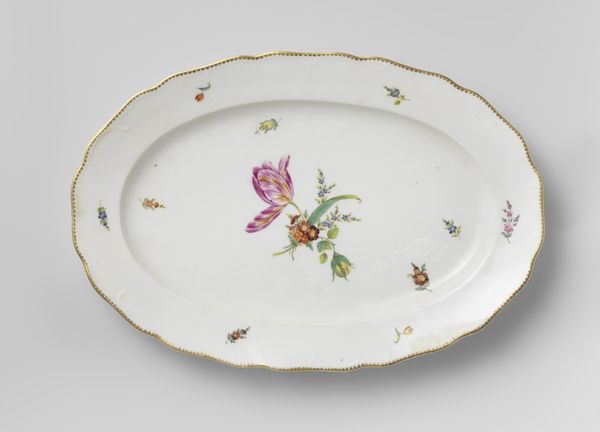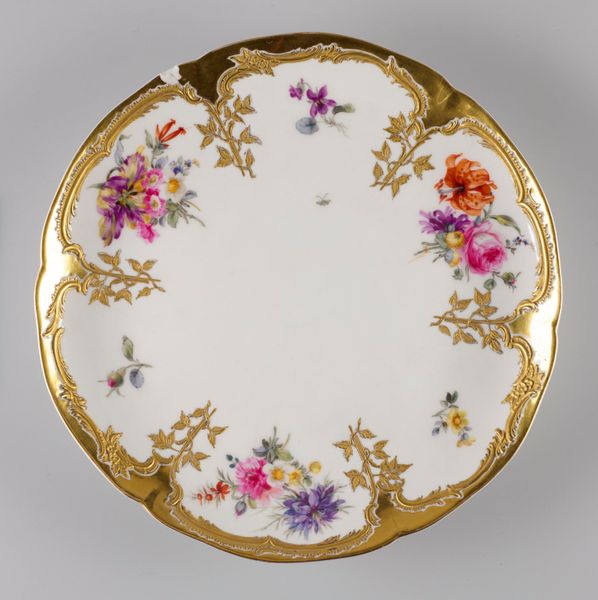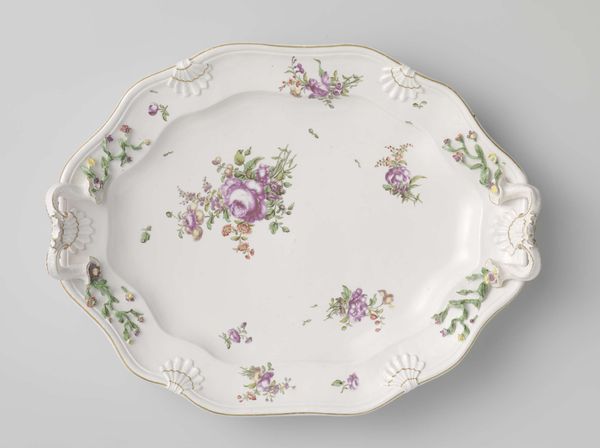
Dimensions: height 3.5 cm, width 22.6 cm, depth 35.7 cm
Copyright: Rijks Museum: Open Domain
This tête-à-tête, or tea service for two, was made by the Loosdrecht porcelain factory in the Netherlands, though we don’t know exactly when. The colourful floral arrangement in the centre reflects the wider European craze for flowers during this period, which saw them appearing in still life painting, textiles and all sorts of decorative objects. Yet porcelain production itself was also an important feature of the period. Across Europe in the 18th century, factories like Loosdrecht attempted to replicate the hard-paste porcelain that was being produced in China, as well as in the Meissen factory in Germany, which had discovered the formula. Here, the delicate material is elevated through the painted image and gilt edges, which would have appealed to wealthy consumers eager to emulate aristocratic taste. Historians of decorative arts have studied trade routes, factory records, and pattern books to better understand this period. These objects are never simply about beauty, but are revealing of social and economic conditions.
